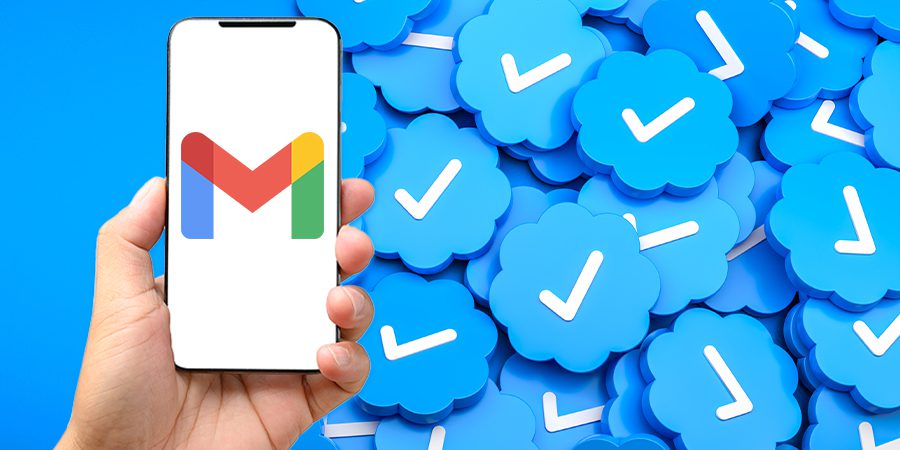In this article, we’ll look at the reasons behind Gmail’s latest update, which aims to help users differentiate between legitimate sources and potential scammers through the introduction of blue verified checkmark icons.
Key Takeaways:
- Gmail introduces blue verified checkmarks for legitimate senders.
- Builds upon existing Brand Indicators for Message Identification (BIMI) feature.
- Increases confidence in email sources and enhances user experience.
- Provides an extra layer of security against spam and impersonators.
- Available for both Workspace accounts and personal Google accounts.
What are Gmail’s Blue Verified Checkmarks?
Gmail’s blue verified checkmarks are a new feature designed to help users identify emails from verified and legitimate sources.
These checkmarks appear next to the sender’s name and signify that the sender has gone through the necessary authentication process with Gmail.
With the prevalence of phishing attacks and scams, these checkmarks offer users an additional layer of security when handling their emails.
Building on the BIMI Feature
The blue checkmark that shows a verified account is an extra part of Gmail’s BIMI feature, which helps identify messages from trusted brands.
BIMI requires companies to authenticate their brand logo, which they use as their email avatar.
This feature aims to assure users that the logo appearing in their inbox belongs to the verified sender.
If a company starts using BIMI, they will get a verified blue checkmark automatically.
Google’s goal is to help users identify legitimate senders quickly, especially if they are unfamiliar with BIMI-approved logos.
How the Checkmark Verification Works
When a sender’s email arrives in your inbox with a blue verified checkmark, it means that they have successfully completed Gmail’s verification process.
This process includes verifying the sender’s domain and profile image, ensuring they are the rightful owners.
To get more information about the sender, users can hover over the blue checkmark.
A message will appear, stating that “the sender of this email has verified” their domain and profile image.
This feature adds a layer of transparency and builds trust between the sender and recipient.
Blue Checkmarks and Online Security
Gmail’s introduction of blue verified checkmarks aims to bolster online security for its users.
Email authentication helps both users and security systems identify and stop spam, while allowing legitimate senders to leverage their brand trust.
By offering a more visible verification method, users can quickly determine whether an email is from a legitimate source or a potential scammer.
This feature aligns with Google’s recent update to Chrome’s address bar, replacing the lock icon with a “tuner” icon.
This change signifies that a website is using the safer HTTPS protocol without misleading users into assuming it’s a legitimate site.
Verified Checkmarks Across Other Platforms
The concept of verified checkmarks is not unique to Gmail. In recent years, several online platforms have adopted similar features to enhance user trust and security.
Twitter, Tinder, Pinterest, YouTube, TikTok, Meta (formerly Facebook), Instagram, and LinkedIn have all introduced their versions of verification badges or checkmarks.
These verification features help users differentiate between genuine accounts and impersonators, providing a safer online experience.
The widespread adoption of verified checkmarks demonstrates the growing importance of trust and security in the digital landscape.
Conclusion
Gmail’s new blue verified checkmarks offer users a simple and reliable way to identify legitimate email sources and avoid falling victim to scams.
By building on the existing BIMI system, Google continues its commitment to enhancing user experience and online security.
The checkmark verification feature is now available for both Workspace and personal Google accounts.
As more online platforms introduce similar verification systems, it’s evident that providing a secure and trusted online experience for users is a top priority.
With the continued growth of the digital world, users can expect to see more innovative solutions to enhance their online safety and security.
 Sections of this topic
Sections of this topic
















